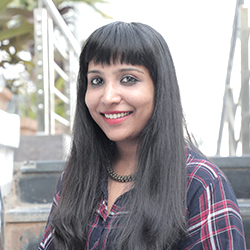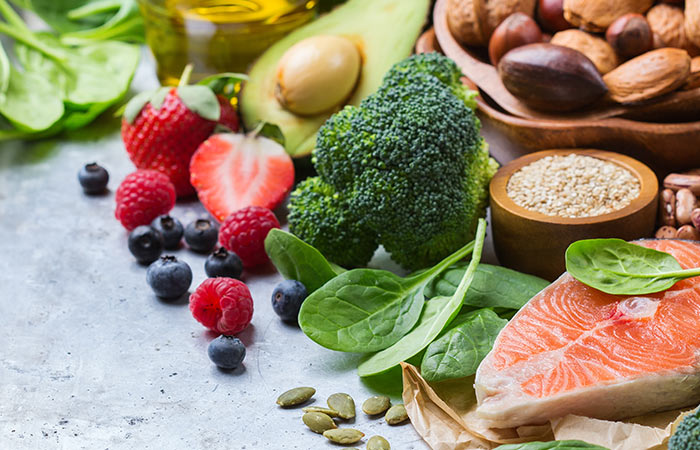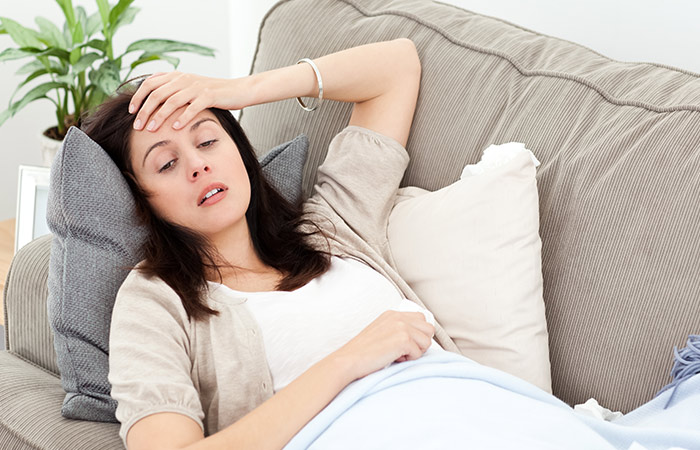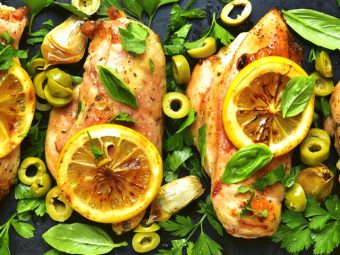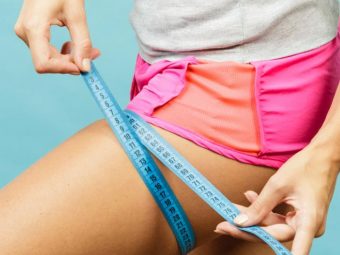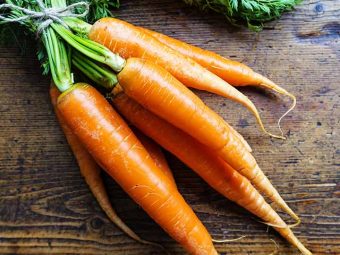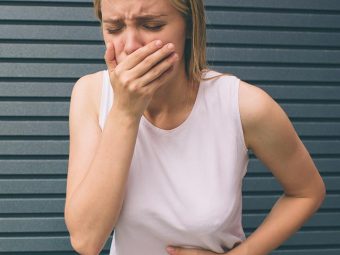The Rice Diet – How It Works, What To Eat, And Benefits
Shed those extra pounds and regulate your sugar levels with this short-term diet.

Rice can lower high cholesterol and high blood pressure (1). Yes, you heard that right! In fact, a rice diet can also reduce hypertension. Moreover, it may reduce the risk of heart disease and diabetes (1).
Kitty Gurkin Rosati (MS, RD, LDN) and Dr. Robert Rosati published a highly successful book on this diet – The Rice Diet Solution – in 2006. Why is the rice diet followed by so many people? Read on to demystify the rice diet, its benefits, and everything else you need to know about this diet that works so well. Scroll down!
In This Article
What Is The Rice Diet And How Does It Work?
The rice diet is a low-calorie, low-sodium diet created by Dr. Walter Kempner in 1939. While working as a professor at the Duke University in Durham, North Carolina, Dr. Kempner created a dietary approach to help his patients lower blood pressure, improve kidney function, and keep a check on obesity.
The reason this diet works for treating people with hypertension or obesity lies in the foods allowed for consumption. It includes foods high in complex carbs, limited dairy, and foods low in sodium.
- Complex carbs take longer to get digested (2), thereby reducing hunger.
- Low-sodium intake may prevent the body from storing excess water weight and reduce the pressure on the kidneys. However, more research is needed in this regard.
- A low-calorie diet (800 calories per day) is allowed initially, which is then increased up to 1200 calories per day.
In a nutshell, low-calorie, low-sodium, and high-fiber foods are the reasons behind the success of the rice diet. Now, let’s check out what foods you should consume and what to avoid.
Rice Diet Foods List
To Consume
The rice diet is quite restrictive. On this diet, you will be consuming:
- Fresh fruits
- Vegetables
- Low-salt beans
- Whole grains
- Lean protein
- Non-fat dairy
To Avoid
- Junk food
- Soda
- Bottled fruit juices
- Candies
- Milk chocolate
- Frozen food
- Deep-fried food
- Ready-to-eat foods
- Refined flour, refined sugar, and trans fat foods
You will need to dump all the junk food and adopt better eating and lifestyle choices. But, there’s one burning question. White rice or brown rice – what’s allowed in the rice diet? Find out in the next section.
White Rice Or Brown Rice?
It depends. If you like having white rice, go for it! And if you choose to consume brown rice, you can do it. Brown rice is considered healthier as it contains more dietary fiber. But you may compensate for that by adding extra veggies to your bowl of white rice.
[ Read : Brown Rice Vs. White Rice ]
Taste-wise, white rice is certainly more palatable. But you might like the chewy texture of brown rice (it takes longer to cook and needs to be soaked for at least 20 minutes).
Dr. Kempner had advised consuming white rice as, at that time, white rice was widely consumed.
Now that you know what to eat and avoid, let’s get down to the toughest part – the diet itself. In the following section, I have broken down the diet into three phases. Follow the instructions for each phase, and you will smoothly glide through it. Take a look.
The Rice Diet Plan
Phase 1 – 800 calories
| Meals | What To Eat |
|---|---|
| Breakfast (8:00 a.m.) | 1 medium bowl of oatmeal with banana and chia seeds |
| Lunch (12:00 p.m.) | Rice + stir-fried veggies + baked fish |
| Snack (3:30 p.m.) | 300 mL freshly pressed fruit juice |
| Dinner (6:30 p.m.) | Grilled chicken and mushroom rice |
Phase 2 – 1000 calories
| Meals | What To Eat |
|---|---|
| Breakfast (8:00 a.m.) | 1 toast + ½ avocado + ½ small bowl of homemade ricotta cheese + 1 cup green tea |
| Lunch (12:00 p.m.) | Rice + stir-fried veggies + grilled chicken |
| Snack (3:30 p.m.) | 1 cup of mixed fruits |
| Dinner (6:30 p.m.) | Vegetable and fish sushi |
Phase 3 – 1200 calories
| Meals | What To Eat |
|---|---|
| Breakfast (8:00 a.m.) | A medium bowl of vegetable quinoa + 1 cup green tea |
| Lunch (12:00 p.m.) | Rice + stir-fried veggies + baked fish or fish curry |
| Snack (3:30 p.m.) | 1 cup buttermilk + 10 in-shell pistachios |
| Dinner (6:30 p.m.) | Low-fat chicken and mushroom risotto |
It is a tough diet to follow. So, it’s best to follow it for not more than two weeks. The rice diet has undergone modification as the nutritional requirements, food habits, and scientific views on food and nutrition have changed. Here are the new rice diet guidelines laid by Kitty Gurkin Rosati and Dr. Robert Rosati.
Consume (per day):
- 1000 calories
- 22 g fat
- 5.5 g saturated fat
- 500-1000 mg sodium
- 0-100 mg cholesterol
Apart from changing your diet, you may do the following to improve your health.
What Else To Do To Improve Your Health?
- You must take care of your sleep pattern. Sleep deprivation is one of the causes of toxin build-up in the body. The harmful free oxygen radicals alter your DNA and cause numerous health problems, including obesity, diabetes, and heart disease (3).
- Meditate for at least five minutes a day. Increase the duration as you become more comfortable.
- Avoid alcohol. You may consume 30 mL of wine once a week.
- Workout regularly. You will start seeing a change in your mood and energy levels from the very first day you exercise.
- Drink at least two liters of water per day. You may add citrus fruits, mint leaves, ginger, and cucumber to make your bottle of water more palatable.
- Eat at regular intervals. Going on a hunger strike will only weaken your bones, muscles, and brain function.
It is clear that, along with diet, you must follow a healthy lifestyle to keep yourself fit and happy. But, for that, you can follow a diet that’s not so restrictive. Try intermittent fasting – it works like magic.
Who should follow the rice diet? Find out next.
Who Should Follow The Rice Diet?
You may follow this diet if:
- You have high blood pressure.
- You have diabetes.
- You have heart disease.
- You suffer from chronic renal failure.
- You have high cholesterol.
- You are gluten sensitive.
Note: Follow this diet ONLY IF your doctor gives you a green signal.
Before coming to a close, here are the benefits and side effects of the rice diet.
Benefits Of The Rice Diet
- May help reduce body fat.
- May help reduce cholesterol levels.
- May help lower blood pressure.
- May improve heart health.
- May protect from diabetes type II.
Side Effects Of The Rice Diet
- May cause nutritional deficiencies.
- You may get bored of the diet and feel starved.
- You may feel irritated.
- May cause nausea.
- May lead to weakness.
Dr. Walter Kempner devised the rice diet in 1939 as a low-calorie, low-sodium diet. Foods high in complex carbohydrates, minimal dairy, and low sodium are part of this diet. Rice diet is good for people with high blood pressure, diabetes, and heart diseases. It is, however, an extremely restrictive diet. You can follow the rice diet only when you have a health issue that necessitates it, and no other diet would suffice. If you are looking for a diet that will help you lose weight, the rice diet might not be the best option. So, speak to your doctor before you decide to be on this diet.
Frequently Asked Questions
How much weight can you lose eating rice?
By eating rice in moderation and practicing calorie restriction and exercise, men can approximately lose 30 pounds and women may lose 20 pounds in about 10 weeks. However, the weight loss varies from person to person.
Is it ok to eat rice every day?
Yes, it is ok to eat rice every day in moderation. If consumed in excess, it may increase the risk of type 2 diabetes and cardiovascular disease.
Are eggs and rice healthy?
Yes, eggs and rice are healthy. They are a perfect balance of carbohydrates and protein. However, consume in moderation to avoid any negative side effects, like weight gain.
Which is the healthiest rice?
Brown rice and wild rice are considered the healthiest forms of rice.
Is pasta healthier than rice?
Whole wheat pasta is a healthier choice compared to rice. However, rice is a better alternative to refined pasta.
Is rice healthier than bread?
Rice (especially brown rice) has more minerals and vitamins that are not present in bread. However, if you are aiming for low calories and carbohydrates, whole grain bread is a better choice.
Is rice anti-inflammatory?
Brown and wild rice exhibit anti-inflammatory properties. They are rich in fiber that aids in reducing the inflammation. However, white rice does not contain fiber and may not help reduce inflammation.
Key Takeaways
- The rice diet is a low-calorie and low-sodium diet mostly used by people with hypertension and obesity.
- This restrictive diet excludes sodas, bottled juices, refined flours, and candies, while fresh fruits, whole grains, lean protein, and low-fat dairy are allowed.
- It can reduce body fat, cholesterol, and blood pressure.
- But side-effects like irritation, nausea, weakness, nutritional deficiencies may occur.
Sources
Articles on StyleCraze are backed by verified information from peer-reviewed and academic research papers, reputed organizations, research institutions, and medical associations to ensure accuracy and relevance. Read our editorial policy to learn more.
- Rice in health and nutrition
https://www.researchgate.net/publication/287284991_Rice_in_health_and_nutrition - Difference Between Simple and Complex Carbohydrates
https://www.researchgate.net/publication/320583094_Difference_Between_Simple_and_Complex_Carbohydrates - Free Radicals Antioxidants in Disease and Health
https://www.ncbi.nlm.nih.gov/labs/pmc/articles/PMC3614697/
